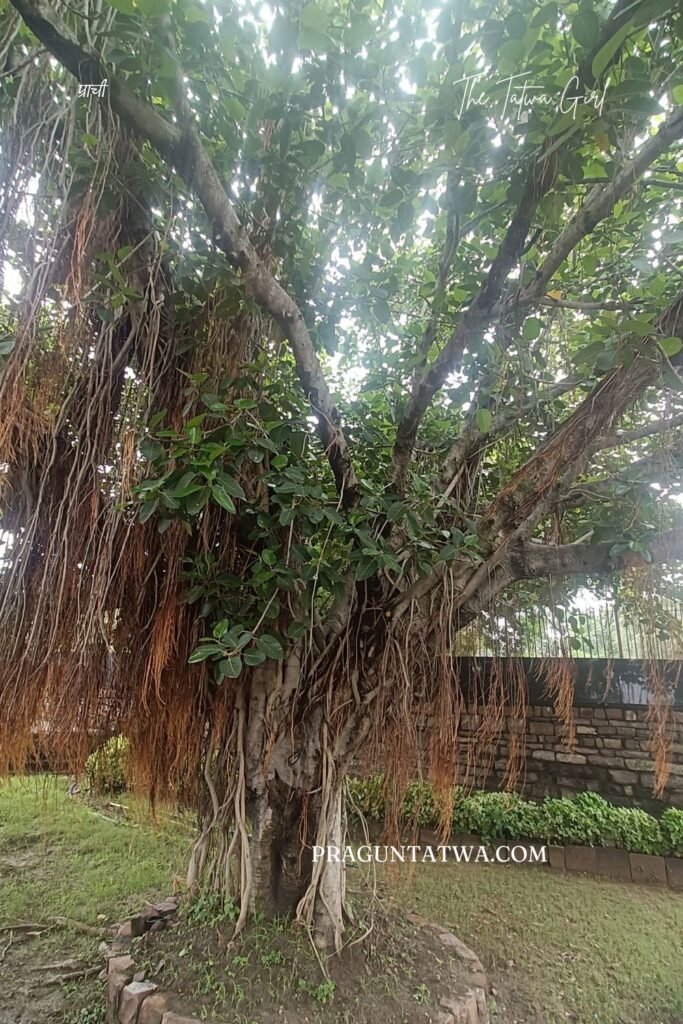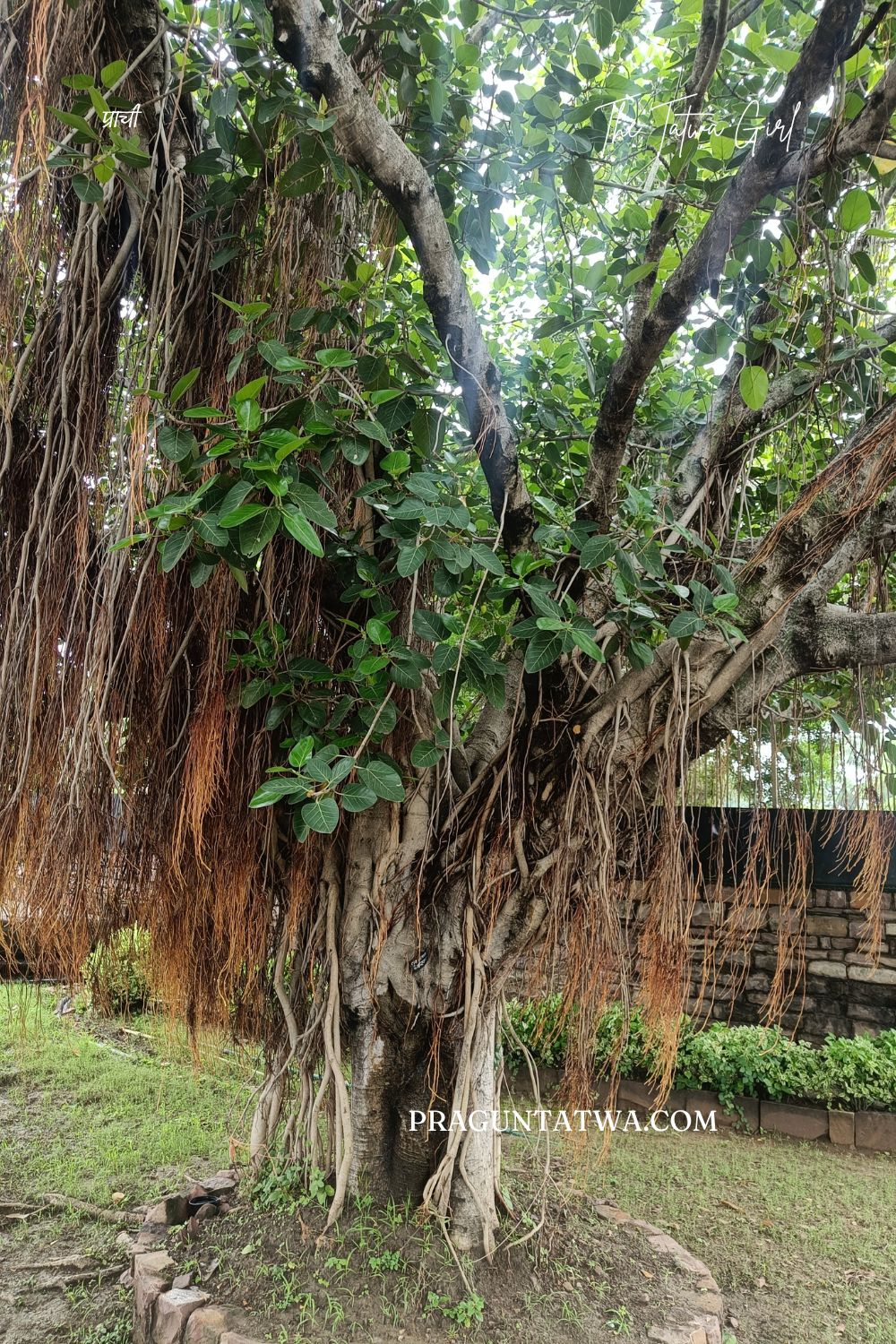“Praise and blame, gain and loss, pleasure and sorrow come and go like the wind. To be happy, rest like a giant tree in the midst of them all”
― Buddha
Sanchi Stupa
My recent visit to Sanchi Stupa took me to another level of calmness. The Sanchi monuments are located on a flat-topped sandstone hill that rises about 300 feet above the surrounding area. In 1989, the site was designated a UNESCO World Heritage site.
Outstanding Universal Value. The stupas, temples, viharas, and stambha at Sanchi in central India are among the oldest and most mature examples of aniconic arts and free-standing architecture that comprehensively document the history of Buddhism from the 3rd century BCE to the 12th century CE.

हमारा दिमाग ही सबकुछ है जैसा हम सोचते हैं वैसा हमारे साथ होता था। हमारा पूरा शरीर का कार्य हमारे दिमाग से शुरू होता है। – गौतम बुद्ध
This beautiful tree welcomed me to the Stupa. I spent 10 minutes just admiring this beauty.
The Banyan tree holds great significance in Indian culture and is closely linked with the spiritual and historical heritage of the country. Its presence at the Sanchi Stupa, an important Buddhist monument in India, enhances the site’s historical and symbolic importance.
Sanchi Stupa Overview
- Location: Sanchi, Madhya Pradesh, India
- Historical Importance: The Sanchi Stupa is a UNESCO World Heritage Site, one of the oldest stone structures in India, originally commissioned by Emperor Ashoka in the 3rd century BCE to house relics of the Buddha.
- Significance: It is a central symbol of Buddhism, representing the Buddha’s path to enlightenment and serving as a place for meditation and pilgrimage.

The Banyan Tree at Sanchi Stupa
The Banyan tree (Ficus benghalensis) is a sacred and symbolic tree in Indian culture and holds a special connection with Buddhism:
- Symbolism in Buddhism: The Banyan tree, like the Bodhi tree (under which Buddha attained enlightenment), is often associated with wisdom, longevity, and shelter. It symbolizes eternal life due to its ever-expanding branches, which root and create new trunks.
- Representation of Growth and Connection: Just as the Banyan tree expands by creating new roots and trunks, it represents interconnectedness and continuity, key concepts in Buddhist teachings about life, karma, and the cycle of birth and rebirth (samsara).
Be like a tree. Stay grounded, keep growing, and know when to let go. – Buddha
Connection to Emperor Ashoka
- Ashoka’s Role in Promoting Buddhism: After converting to Buddhism, Emperor Ashoka played a crucial role in the construction of Buddhist stupas like Sanchi. His influence is evident in the presence of various symbols, like the Banyan tree, which was sacred in both Hinduism and Buddhism.
- Tree Planting Tradition: Ashoka was known for planting sacred trees around monasteries and stupas. The Banyan tree’s inclusion in the landscape around Sanchi is a part of this tradition, reflecting the integration of nature into sacred spaces.
Cultural and Environmental Significance
- Shade and Shelter: The Banyan tree, known for its vast canopy, provides shade and shelter, making it a fitting symbol for a place of spiritual refuge like the Sanchi Stupa. Pilgrims and visitors to the stupa can gather under the Banyan tree, finding peace and contemplation in its shade.
- Sustainability: The Banyan tree’s growth pattern, where branches form new roots, creating additional support systems, symbolizes sustainability and resilience, values that align with both spiritual and ecological mindfulness.
In summary, the Banyan tree at Sanchi Stupa is more than just a tree—it is a powerful symbol of spiritual growth, wisdom, and interconnectedness, which ties deeply with Buddhist philosophy and the legacy of Emperor Ashoka’s promotion of Buddhism across India.

Tree Love
Moreover, I’m sharing my #TreeLove with – the #Thursday Tree Love blog hop, a photo feature hosted by Parul Thakur.
Coupled with this, This is my Love Your Planet “Earth” post and a post to make us aware of the trees around us.
Save trees, nurture, conserve, and preserve the trees around us and our planet. Do you love Trees?
Do you love knowing more about trees? Explore the trees in your neighborhood and join Tree Love.
You might also like to see my Tree Love in these Tree Posts:
- Did you hug a tree today?
- October Flowers of Parijaat
- Chinese Hackberry in Nilgiris
- A beautiful flowering Mango Tree
- The Vivid Gulmohar Tree
- X-mas Tree — That kept me sane in lockdown
Environmentally Conscious with Prachi
To add on, read and join the Sustainability with Prachi series and listen to interviews with Eco-conscious people who are trying their bit towards conscious and sustainable living practices only on Green Tatwa Talks. There is so much to learn and explore from all I have interacted with, Do listen and drop in your views in the comments. And, if you want to know Environment-related dates Click here.
Moreover, Along with Eco-friendly discussions, I even share Gratitude Stories of people bringing beautiful change to this world.
For more Kisse Kahani, tune in to my YouTube channel and check out all Green Talks episodes on my YouTube channel HERE.
Along with this, Support, share, and try to bring that one change in your life toward a greener tomorrow. Keep visiting.
Being Eco-Friendly is not a choice, make it a habit.
Without a doubt, sustainability is easier than you think. You don’t have to jump in by changing everything, start small to make the changes more eco-friendly, sustainable & a part of your daily life.

Leave a Reply